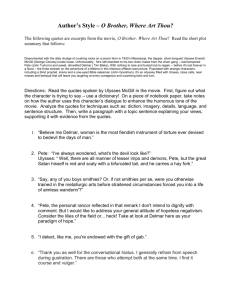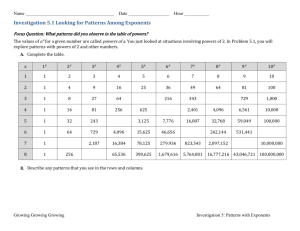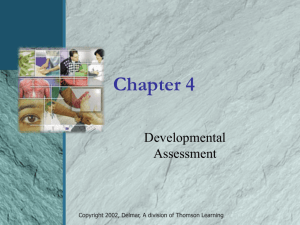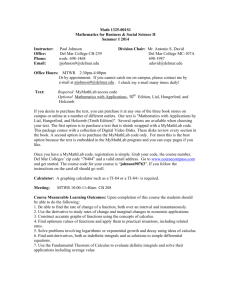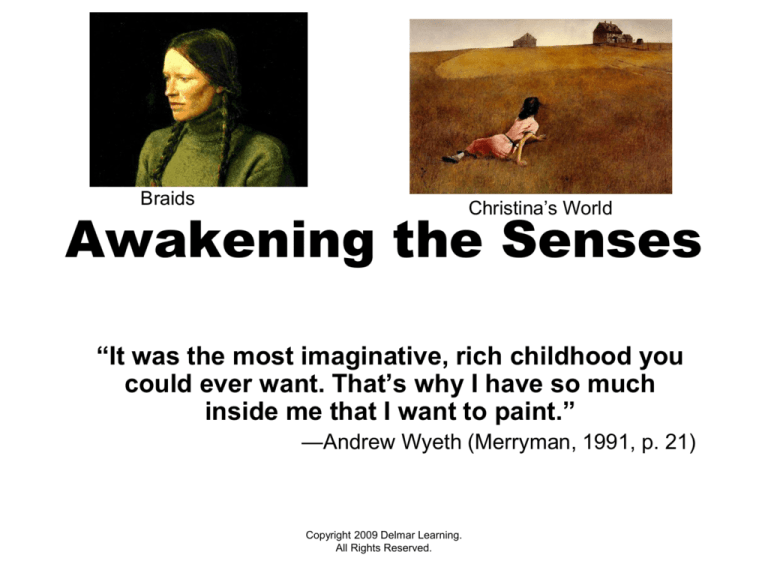
Braids
Christina’s World
Awakening the Senses
“It was the most imaginative, rich childhood you
could ever want. That’s why I have so much
inside me that I want to paint.”
—Andrew Wyeth (Merryman, 1991, p. 21)
Copyright 2009 Delmar Learning.
All Rights Reserved.
Aesthetics
• An abstract concept
• Means perception in Greek
• Involves the love and pursuit of beauty as
found in art, movement, music and life
• Is an awareness and appreciation of the
natural beauty found in nature and one’s
surroundings
• Being a beholder of beauty
Copyright 2009 Delmar Learning.
All Rights Reserved.
Examples of Aesthetic Experiences
Touching the sparkling
design of frost on a window
Viewing the translucent
silkiness of a spider web
Stopping to savor the
aroma of freshly baked bread
Copyright 2009 Delmar Learning.
All Rights Reserved.
Aesthetics
• A branch of philosophy concerned with an
individual’s pursuit of and response to
beauty
• It involves:
– Attitude
– Process/experience
– Response
Copyright 2009 Delmar Learning.
All Rights Reserved.
Aesthetics
• Teacher’s Role
– Expose, not impose
– Aesthetic model
– Provide for a wide variety in the arts
– Aesthetic classroom
•
•
•
•
Books
Art visitors
Art trips
Sensory literacy
Copyright 2009 Delmar Learning.
All Rights Reserved.
Aesthetic Development
Children are born with a sense of wonder. Their
aesthetic sense develops through:
•
•
•
•
•
Sensory experiences
Exposure to their own cultural styles
Experiences with other aesthetic styles
Messages from the media
Adult and peer reactions to arts
performances
Copyright 2009 Delmar Learning.
All Rights Reserved.
Developing Sensory Awareness
1. Describe the sensory qualities of things
and events.
2. Put out displays of interesting objects.
3. Ask questions that invite children to
describe or compare sensations they are
feeling.
Copyright 2009 Delmar Learning.
All Rights Reserved.
Sensory Integration
Sensory integration is the processing of
information gathered by the senses.
Sensory integration dysfunction
(SID) is being over- or under sensitive to
touch, movement, sights, and sounds.
Copyright 2009 Delmar Learning.
All Rights Reserved.
Sensory Perception Activities
•
•
•
•
•
Visual
Tactile
Olfactory
Gustatory
Auditory
Copyright 2009 Delmar Learning.
All Rights Reserved.
Additional Senses (Montessori)
• Chromatic- Montessori views this as a
subset of the broader sense of vision. It
involved the ability to identify, match, and
discriminate among colors.
• Thermic- deals with the
perception of temperature.
This wooden box with compartments holds 8
stainless steel bottle with screw-on tops.
The teacher prepares the exercise by filling the bottles
with water of various temperature. The exercise of
pairing and grading the thermic bottles helps refine the
thermic senses.
Copyright 2009 Delmar Learning.
All Rights Reserved.
Additional Senses (Montessori)
• Sterognostic- being able to recognize
objects through tactile-muscular
exploration without the aid of vision
Feely bag
Copyright 2009 Delmar Learning.
All Rights Reserved.
Additional Senses (Montessori)
• Baric- Recognizing objects as heavy or
light
The Baric Tablets introduce and
refine the concept of the baric
sense. While blindfolded, the child
endeavors to discern the weight of
the tablets of wood. Error is
controlled by the color of the
wooden tablets, the lightest color
wood being the lightest weight to
the darkest color wood being the
heaviest weight. The set consists
of a box with 7 light-weight tablets,
a box with 7 medium-weight
tablets and a box with 7 heavyweight tablets.
Copyright 2009 Delmar Learning.
All Rights Reserved.
Additional Senses (Montessori)
• Kinesthetic- involves the whole body,
sensory-motor muscular response
Copyright 2009 Delmar Learning.
All Rights Reserved.
Elements of the Arts
These ingredients are the building blocks of the
artist, composer, dancer, and actor. All arts
performances and works contain one or more
of the following:
Line
Shape
Color
Texture
Pattern &
Rhythm
Form
Space
Movement
Copyright 2009 Delmar Learning.
All Rights Reserved.
Elements of the Arts (continued)
Line
Copyright 2009 Delmar Learning.
All Rights Reserved.
Elements of the Arts (continued)
Color
Copyright 2009 Delmar Learning.
All Rights Reserved.
Elements of the Arts (continued)
Texture
Copyright 2009 Delmar Learning.
All Rights Reserved.
Elements of the Arts (continued)
Shape
Copyright 2009 Delmar Learning.
All Rights Reserved.
Elements of the Arts (continued)
Pattern & Rhythm
Insert image 4.11
Copyright 2009 Delmar Learning.
All Rights Reserved.
Elements of the Arts (continued)
Form
Copyright 2009 Delmar Learning.
All Rights Reserved.
Elements of the Arts (continued)
Space
Copyright 2009 Delmar Learning.
All Rights Reserved.
Elements of the Arts (continued)
Movement
Copyright 2009 Delmar Learning.
All Rights Reserved.





